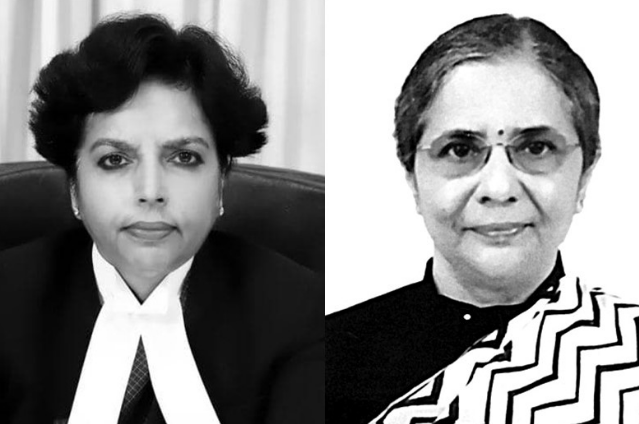
Images by Wikipedia
Recently, Chief Justice of India, D Y Chandrachud constituted an all-women bench in Supreme Court to hear transfer petitions involving matrimonial disputes and bail matters. The bench comprised Justices Hima Kohli and Bela M Trivedi.
This is 3rd such bench. The first all-women bench was set up in 2013 when a bench of Justices Gyan Sudha Misra and Ranjana Prakash Desai was constituted followed by a bench of Justices R. Banumathi and Indira Banerjee in 2018.
Justice Nagarathna is also set to become the first woman CJI in 2027.
Status of Women in Judiciary:
- In Supreme Court, only 11 women judges have been appointed till now.
- In High Court, there also the proportion of women is low.
- Only 15% are women lawyers.
- Only 2% of the elected representatives are women in Bar Council.
Reasons for Low Women Participation:
- Deeply ingrained 'patriarchy' in society.
- The opaque working of the Collegium system has also been regarded as a cause for their low participation.
- No seats have been reserved for women in Judiciary.
- The number of women advocates is still low.
- Lack of proper judicial infrastructure such as the shortage of women's washrooms is another barrier to women in the profession.
Significance of Higher Women Representation in the Judiciary:
- Greater involvement of women in the sector will help many women to gain access to justice effectively.
- Women's participation will give the entire set-up a better perspective while dealing with the affairs of the female.
- A woman as a judge would inspire confidence in the lives of many other women to take up a similar profession.
Way Forward:
- Emphasising the inclusion of women to bring about social and behavioural changes.
- The transparency of the Collegium System is the need of the hour.
- Unless women are empowered, justice cannot be done for them.
- The reservation of women is much essential in Judiciary.
. . .
References:
- business-standard.com
- indianexpress.com
- thehindu.com
Discus
